Geochemistry Laboratory
The Geochemistry Laboratory in the School of Geography, Environment and Earth Sciences (SGEES) includes world-class instrumentation, and associated clean-room geochemical facilities, that are intensively used for research, teaching and commercial work. The SGEES Geochemistry Laboratory is recognised internationally as an outstanding analytical facility centred around the microanalysis of a wide range of trace elements and determination of isotopic ratios in diverse materials such as minerals, rocks, meteorites, ice, foraminifera and biological samples. The structure of the operation ensures access primarily to SGEES staff and students, but is also available to external users for research and commercial purposes. Please contact the laboratory manager for costings and availability (Bruce Charlier).
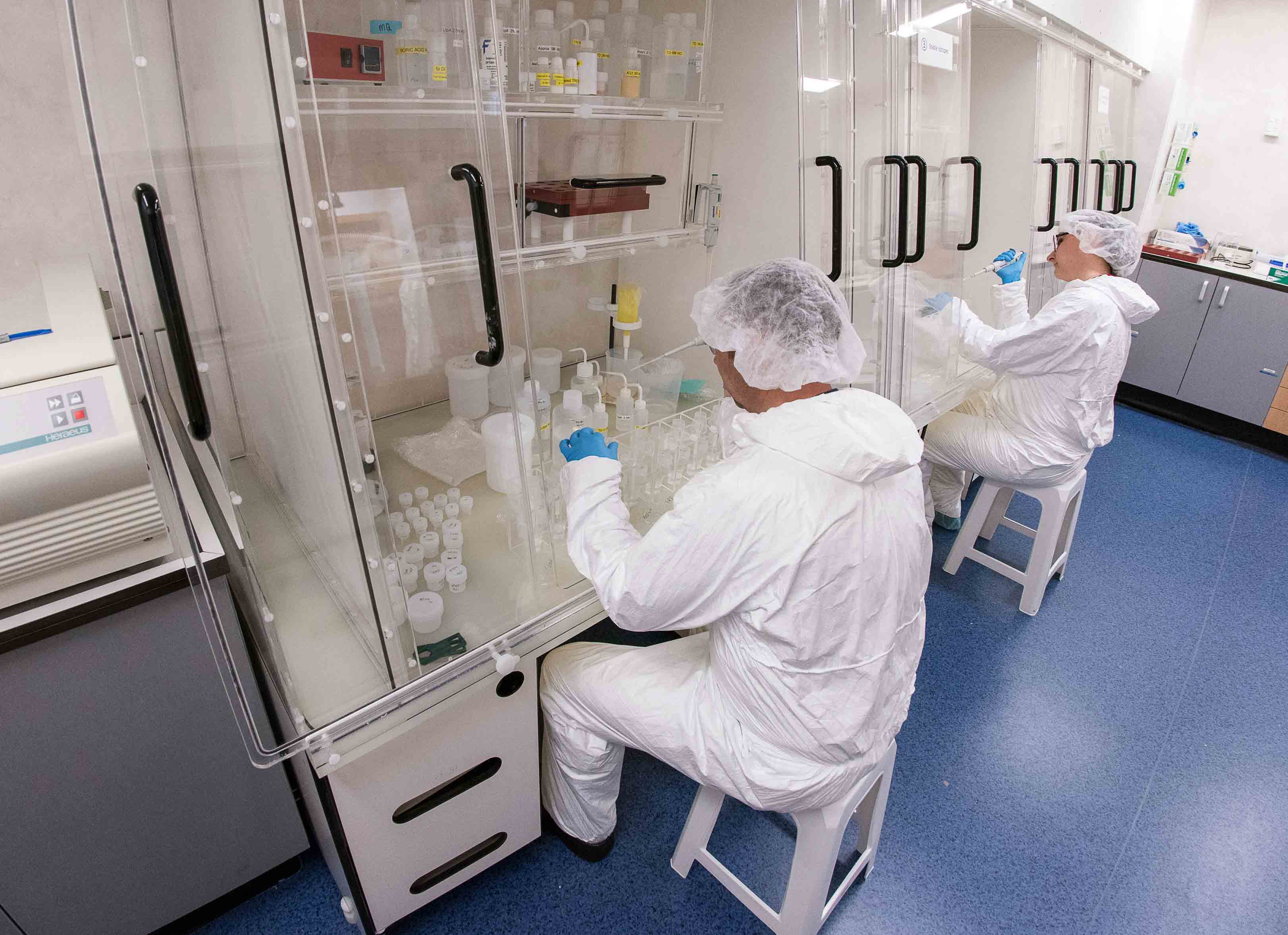
The primary goal of the SGEES Geochemistry Laboratories is the ability to analyse a broad spectrum of trace elements and isotopic ratios in a wide variety of geological materials. For whole-rock analyses this includes measurement by solution ICP-MS. The measurement of elemental abundances is complemented by high-precision measurement of radiogenic isotopes including Rb-Sr, Sm-Nd, Pb and short-lived U-series systems (U-Th) by a combination of TIMS and solution ICP-MS. A major research strand in our labs is the development of techniques for the measurement of in-situ trace elements. Recent acquisition of an Agilent 7900 ICP-MS coupled to a Resonetics S155-SE, 193 nm Excimer laser (when integrated with data produced in our Electron Microprobe Facility) permits the investigation of a wide range of elements in diverse solid samples.
Instrumentation
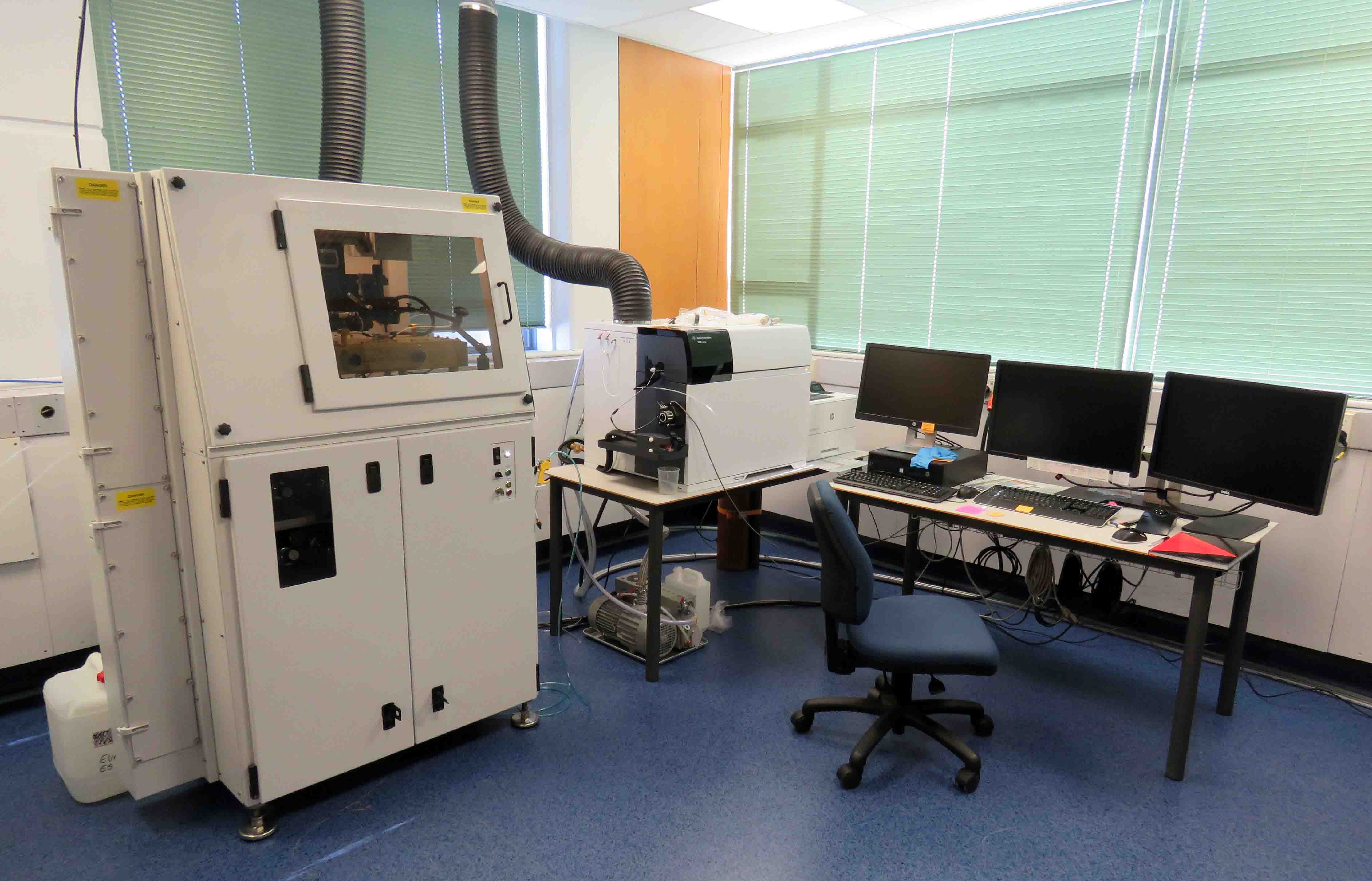
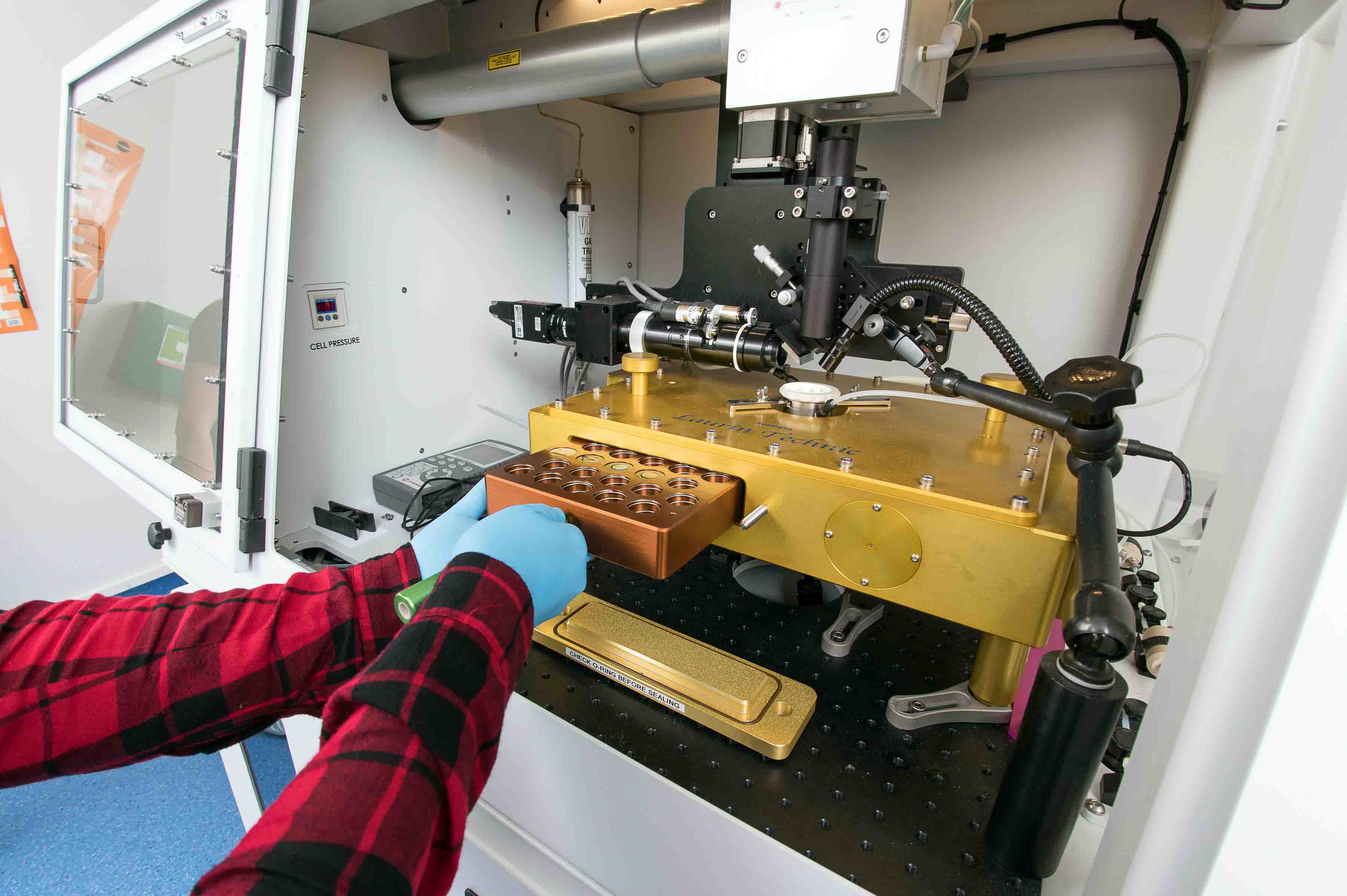
.The Geochemistry Laboratory is equipped with:
- an Agilent 7900 ICP-MS
- a Resonetics S155-SE, 193nm excimer laser ablation system for in-situ analyses
- a Thermo-Fisher Element2 sector-field ICP-MS, and
- a Thermo-Fisher Triton TIMS.
Agilent ICP-MS and Resonetics laser ablation
Inductively Coupled Plasma Mass Spectrometry (ICP-MS) uses a high temperature argon plasma source to ionise samples for mass spectrometric analysis. The Agilent ICP-MS is a quadrupole mass spectrometer, which allows near-simultaneous acquisition of trace element concentrations across the mass range from lithium to uranium. The instrument is used almost exclusively in conjunction with our Resonetics laser ablation system where samples are introduced as solid material sampled by a focused laser beam that ablates a tiny amount of the material (0.01 – 0.1mm diameter spot), which is then transported to the instrument for analysis.
Thermo-Fisher Element2 ICP-MS
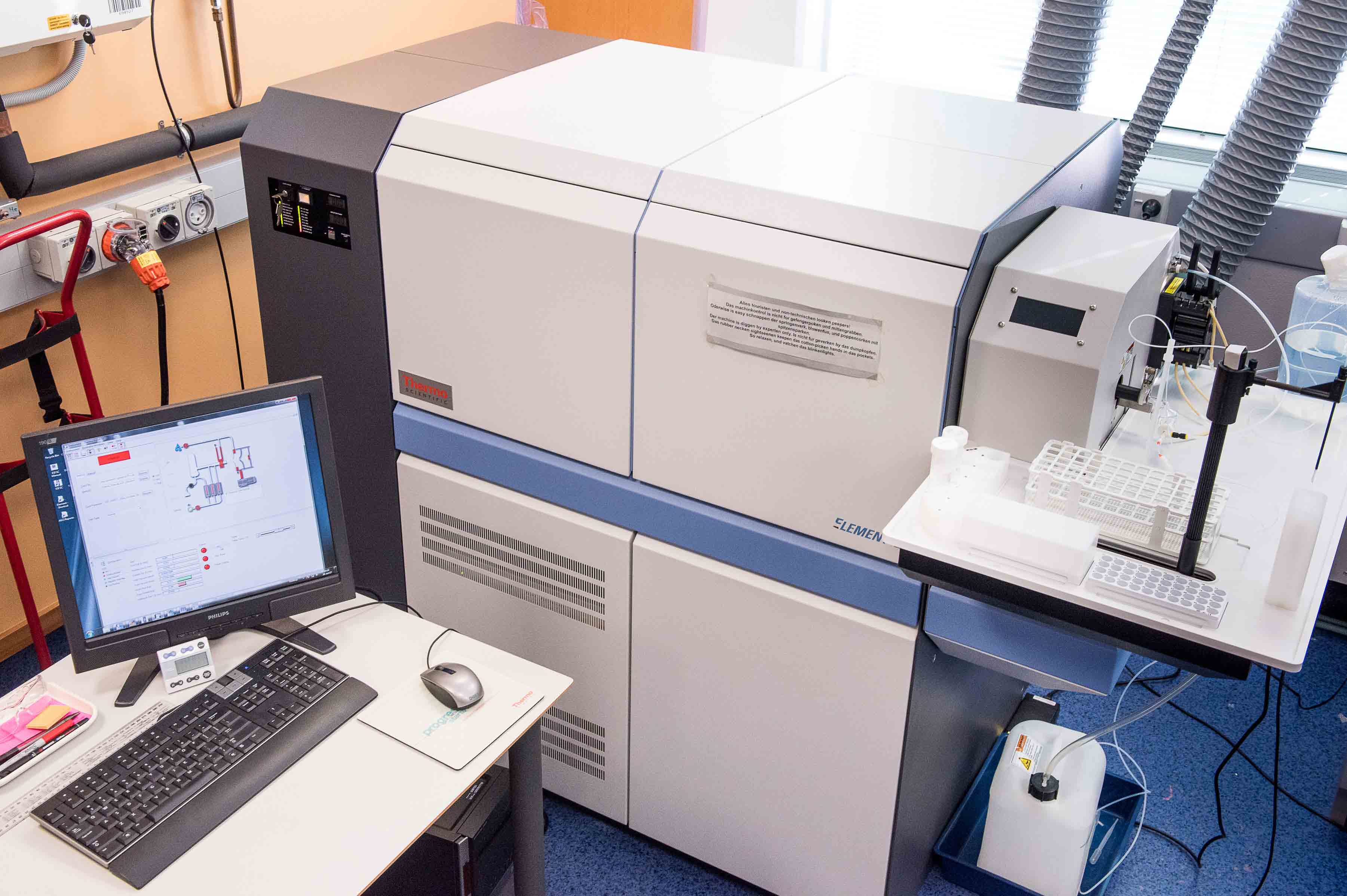
The Element2 ICP-MS is a single-collector, double focusing magnetic sector-field mass spectrometer. The only one of its kind in New Zealand, it allows rapid trace element concentration analysis of trace elements across the mass range at high resolution. When operated in lower resolution, its greater sensitivity allows for the measurement of trace elements present in samples at very low natural abundances. As with the Agilent quadrupole ICP-MS, samples can be introduced either as solid material sampled by the Excimer laser or via acidified solutions of digested material.
Thermo-Fisher Triton TIMS
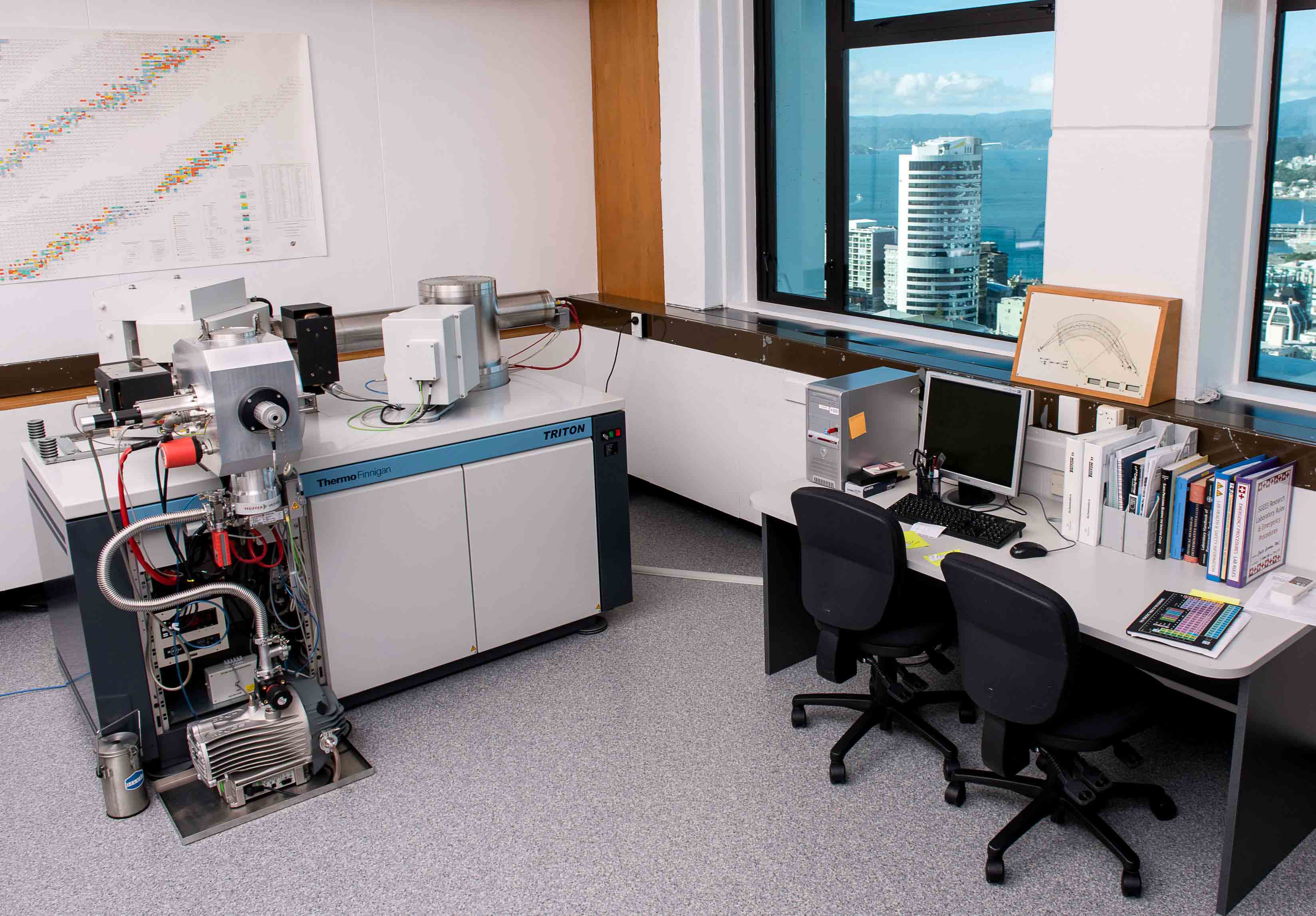
The Triton TIMS instrument is dedicated to the measurement of Nd, Sr, Pb and U-Th isotopes with the objective of obtaining ultra high-precision isotope ratio measurements (e.g. Sr and Nd isotope ratios at an external precision of ±10 ppm 2σ or better) on small samples.
The instrument is of a non-standard configuration and is fitted with:
- RPQ-SEM which results in a very high abundance sensitivity and enables the measurement of extreme isotope ratios (e.g. U and Th)
- 1011Ω and 1013Ω feedback resistors permit the measurement of extremely small ion beams (sub nanogram quantities of analyte) at high precision.
Ultra-clean Laboratory
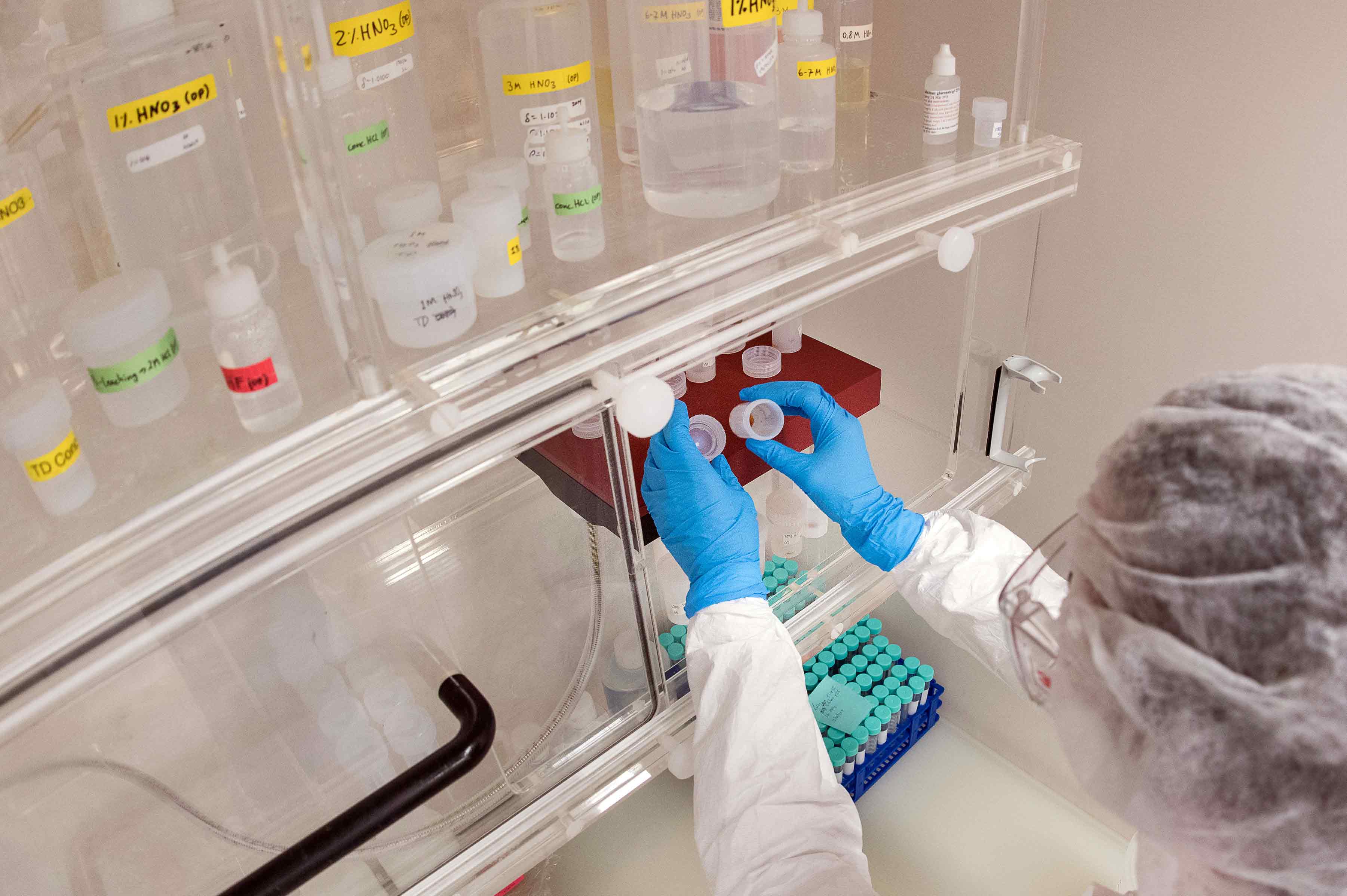
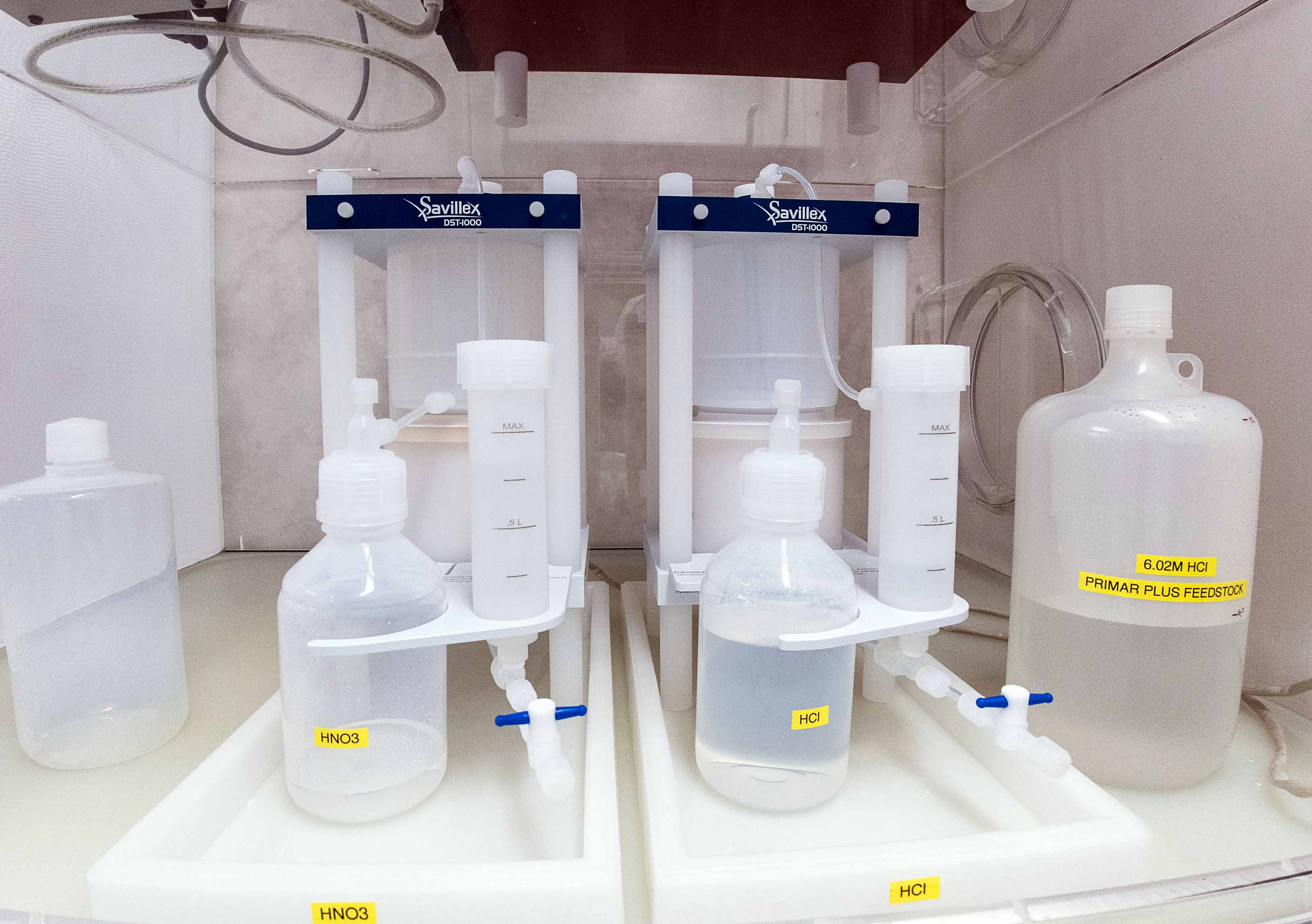
The Ultra-clean Laboratory is equipped with four PicoTrace laminar flow workstations and is used for the preparation of samples for radiogenic isotope and trace element analyses in an ultraclean environment.
- Column chemistry: Pb, Sm-Nd, Rb-Sr, U-Th
- Rock digestion using HF and NH4F techniques
- High-temperature, high-pressure digestion (zircons and zircon-bearing felsic rocks)
- Variety of certified rock and mineral standards
- Large inventory of spike solutions for high-precision isotope analyses
- In-house preparation of ultra-trace reagents via sub-boiling distillation
To obtain the high level of cleanliness and low blanks necessary for high precision analyses, and for HSNO reasons, access is only available to trained staff and students, or under strict supervision.
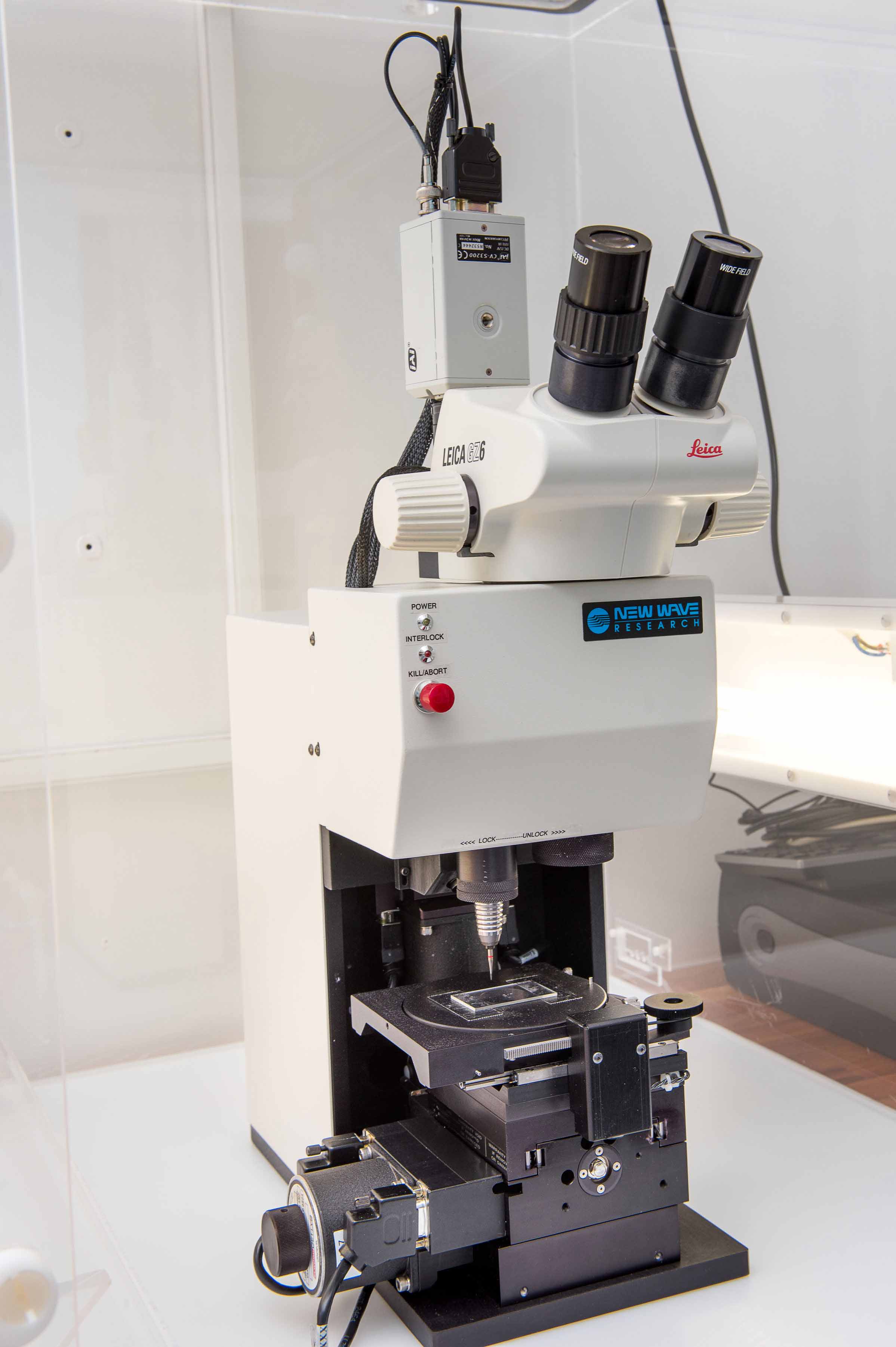
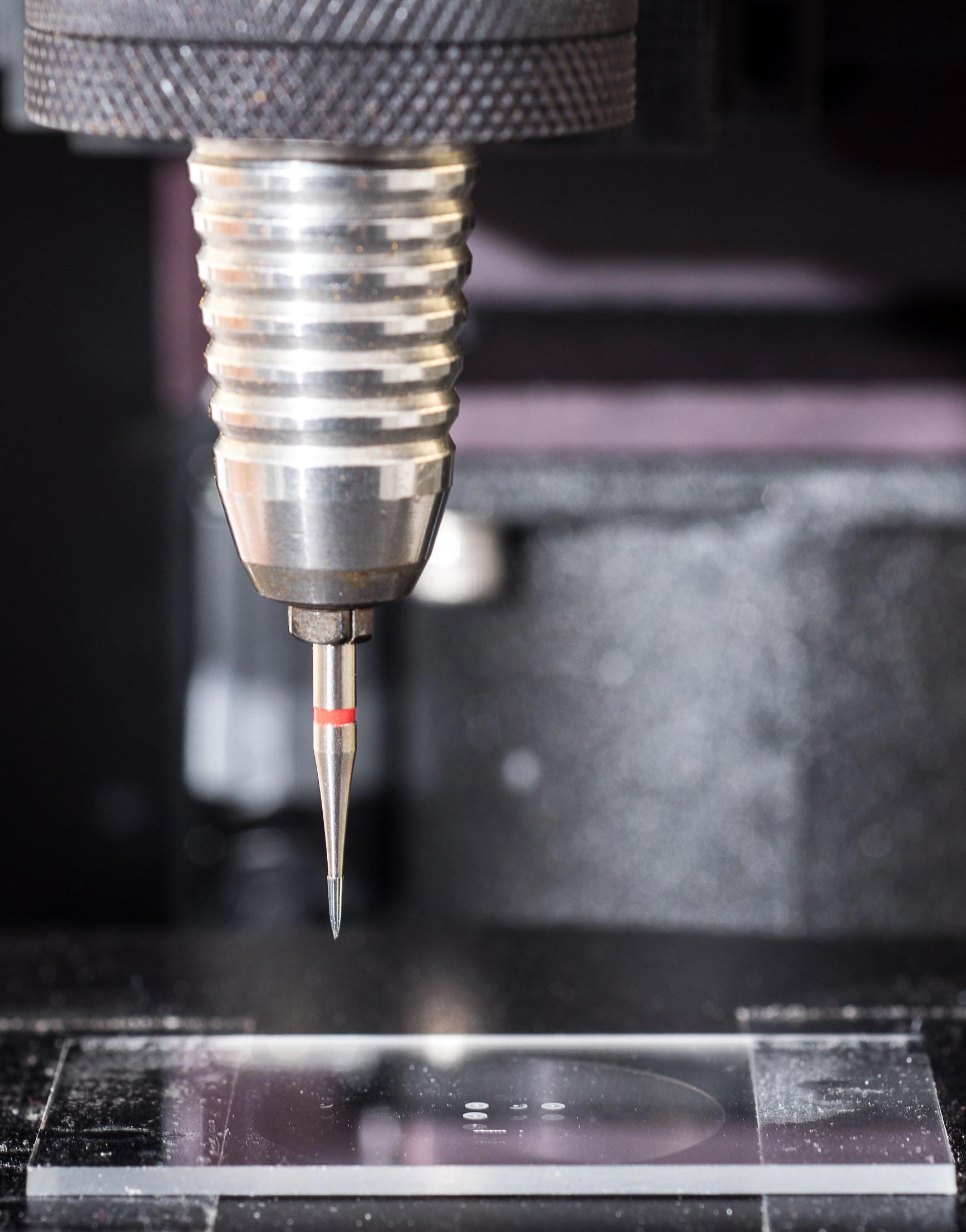
New Wave/Merchantek Micromill
The Micromill is used to produce milled powder samples from a range of different materials. Computer control of the milling process allows complex structures in solid materials to be micro-sampled for subsequent trace element and/or isotopic analysis.
Read more about the research we undertake in the Volcanology, Geochemistry and Petrology Research Group page
